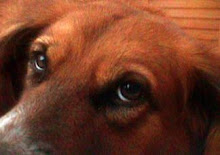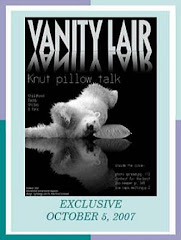
Dies ist der Titel eines Kinderbuches, in dem es um die wahre Geschichte eines kleinen Hundezwergs geht, die zur Anführerin ihres Rudels wird.
Pam Flowers ist dabei, sich für eine sechs Monate lange Fahrt per Hundeschlitten vorzubereiten, 2500-Meilen von Barrow/Alaska nach Repulse Bay in Kanada, die sie zur ersten Frau macht, die die nordamerikanische Arktis allein überquert.
Anna und ihre Geschwister trainieren zusammen mit den älteren ausgebildeten und erfahreneren Hunden, die stärksten unter ihnen werden die Expedition begleiten. Bevor die Jungtiere versuchen, einen Schlitten zu ziehen, wird ihnen erst einmal beigebracht Sprachbefehlen zu folgen, ein Geschirr zu tragen, sowie Zweige, Reisig, und dann kleine Stämme hinter sich zu ziehen.
Obwohl die Kleinste, beweist Anna Mut und Liebe zum Laufen, sie wird für die Expedition ausgewählt. Als etwa in der Mitte des Trecks der erfahrene Leithund Douggie davonrennt; übernimmt Anna die Führung bis zum Abschluss der Reise, die fast doppelt so lange dauert wie geplant. ...
 Editorial Review -
Editorial Review - 
Pam Flowers erzählt Annas beeindruckende Geschichte auch in Klassenräumen und Auditorien in ganz Nordamerika. Kinder lernen, dass selbst die Kleinsten, die die unter uns am wenigsten Macht haben, groß genug sind, um ihr Bestes zu geben. (Die aufregende Reise des 9 köpfigen Teams, eine Frau mit 8 Hunden, ist auch festgehalten in Wort, Bild und Tagebucheinträgen in dem preisgekrönten Buch "Alone across the Arctic:One Woman’s Epic Journey by Dog Team"
Arctic adventurer Pam Flowers shares Anna’s amazing story in classrooms and auditoriums all over North America. Children learn that even the smallest, seemingly the most powerless among us, are big enough to try their best. (The team’s exciting record-breaking journey is also chronicled in text, photographs, and journal entries in the award-winning book Alone across the Arctic: One Woman’s Epic Journey by Dog Team.)
 Hier wird übrigens auch die Begegnung mit einer Eisbärin und ihrem Jungen geschildert, offenbar eine, die einiges Interesse bei den neugierigen Hunden auslöste...-
Hier wird übrigens auch die Begegnung mit einer Eisbärin und ihrem Jungen geschildert, offenbar eine, die einiges Interesse bei den neugierigen Hunden auslöste...-By the way, here you will find also the account of a polar bear encounter, a female with her single cub...

"As we came around a slight corner, I saw a polar bear about a hundred yards away, standing up in a ravine, nursing her cub. She looked so beautiful. She didn’t move, just stood there watching us as we went by. Because the bears were above eye level, I was praying that we would get by them without any of the dogs seeing them. But just as we came even with them, Robert looked over and saw them. Robert is very social and decided to go visiting. At first the other dogs didn’t see them. I told Douggie to “haw” to help keep us going straight. Then, suddenly, everyone saw them… (ALONE ACROSS THE ARCTIC)"
Was mich angeht, ich bin nun mindestens ebenso neugierig wie Robert geworden...Für Arktisinteressierte und Hundeliebhaber gehören diese beiden Bücher ganz sicher auf die Liste der Bücher, die unbedingt gelesen werden müssen...
As to me, I can only say that I have become curious too...Both books are certainly a must-read for everyone intrigued by the Arctic and loving dogs...


 Anna died 2007 at age 15...
Anna died 2007 at age 15...Thanks to Pam Flowers and her lovely book, she will always be remembered as what she was...
A brave and intrepid sled dog on an extraordinary journey!
Source & photo credits:
- Big-Enough Anna....The Little Sled Dog Who Braved the Arctic
By the way, I came across Anna while looking for background information about the Arctic village Dikson which was visited by Svetlana Bogdanovitch during her Icebreaker trip, instead I landed here probably because of Ann Dixon, Pamela Flower's co-author of 'Big-Enough Anna'...as so often I am again indebted to the Internet...:))
Please visit also Pam Flower's website, which is really interesting, apart from information of how to make a dog's life happy and healthy, you will find more about her educational school visits and other projects.
Interesting too an article about Pam Flowers by Molly Loomas, presenting her on a website featuring Arctic explorers and here is the link to a more recent article about Pam and the way she is training her dogs, that's where I found the photo with the polar bear...:))
Note:
Alle, die interessiert an Büchern von Pamela Flowers sind, bitte kauft über sie direkt, der Verlag, der ihre Bücher unter Vertrag hatte, ist pleite gegangen, was bedeutet, dass sie keinen Pfennig verdient, solange ihre Bücher woanders gekauft werden.
In case you are interested and you want to buy books of Pam Flower's please buy via her Store as her publisher went bankrupt which means she won't gain a cent if you buy elsewhere!
There will be a second part ...Ein zweiter Teil zu Pam und ihren Hunden ist in Vorbereitung!



























































































